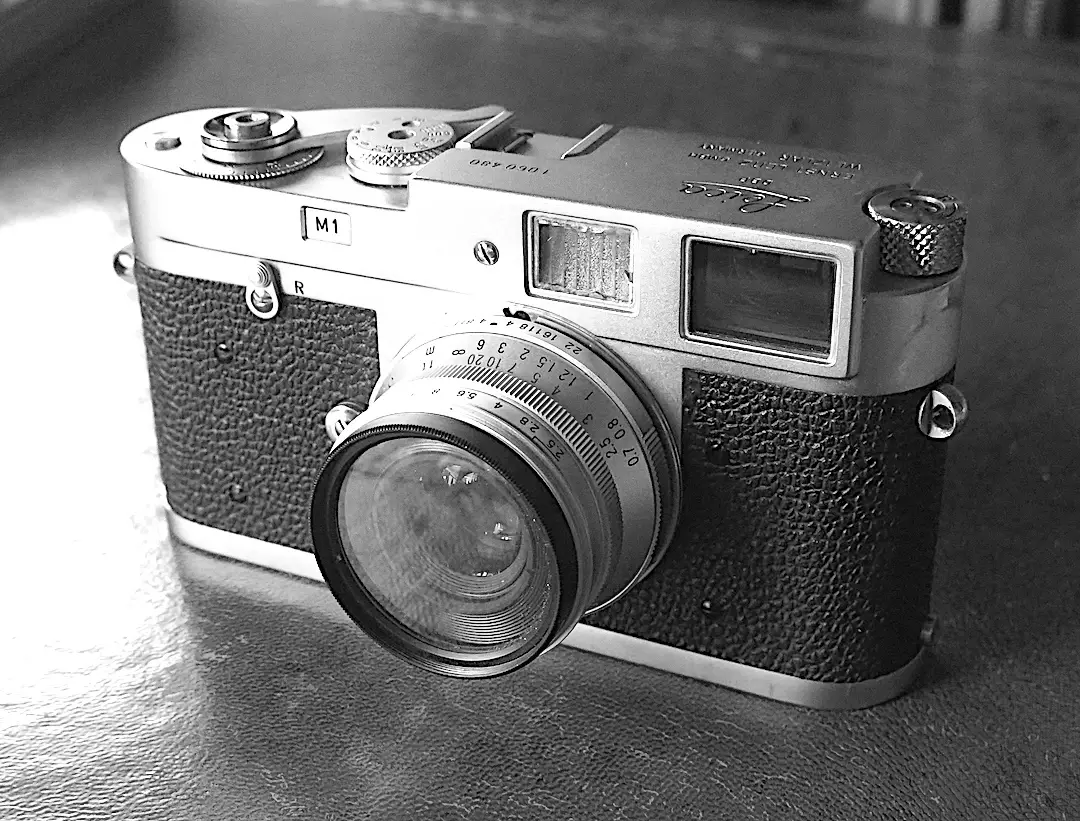The Leica M1 is a classic rangefinder camera that was first introduced in 1959. It was the first Leica camera to feature a built-in light meter, and it was also the first M-series camera to have a rewind crank instead of a knob. The M1 was designed to be a simpler, more affordable alternative to the Leica M3, which was the flagship model at the time.
Despite its simplicity, the Leica M1 is still a highly sought-after camera among photographers who appreciate its charm and classic design. The camera is built like a tank, with a solid metal body and smooth, precise controls. Its compact size makes it easy to carry around, and its rangefinder focusing system allows for quick and accurate focusing even in low light.
One of the things that sets the Leica M1 apart from other cameras is its simplicity. The camera has no automatic exposure modes or autofocus, which means that the photographer has to take full control of the exposure and focus settings. This can be challenging at first, but it can also be a rewarding experience for photographers who want to fully immerse themselves in the creative process.
The Leica M1 uses Leica’s M-mount lenses, which are known for their exceptional quality and sharpness. The lenses are also compact and lightweight, which makes them ideal for travel and street photography. The camera’s built-in light meter is accurate and easy to use, and it can be set to either match the film’s ISO or to manually adjust the exposure settings.
Here are the full specifications for the Leica M1:
Camera type: Rangefinder camera
Lens mount: Leica M bayonet mount
Film format: 35mm
Frame size: 24x36mm
Viewfinder: Brightline viewfinder with automatic parallax correction and projected frame lines for 35mm, 50mm, 90mm and 135mm lenses
Focusing system: Split-image rangefinder with coincident image
focusing Shutter: Cloth focal plane shutter with speeds from 1s to 1/1000s plus B
Metering system: Built-in Selenium light meter with match-needle indicator, coupled to shutter speed dial
ISO range: 20 to 3200
Exposure modes: Manual exposure only
Flash: Sync socket for electronic flash and X sync at 1/50s
Self-timer: None
Film advance: Single-stroke rapid wind lever and rewind crank
Power source: None, all mechanical operation Body
construction: All metal body with black enamel finish and chrome-plated brass top plate
Dimensions (WxHxD): 138 x 77 x 33mm (5.4 x 3.0 x 1.3in)
Weight: 590g (1.3lbs)
Overall, the Leica M1 is a simple, reliable and well-built camera that offers a range of manual controls for the experienced photographer. Its bright and accurate viewfinder, coupled with the rangefinder focusing system, makes it a popular choice for street, documentary and travel photography. Its small size and discreet appearance also make it a great camera for shooting in public places without drawing too much attention. While the Leica M1 may lack some of the bells and whistles of more modern cameras, its charm and simplicity make it a classic that continues to be loved by photographers today.
Here are some pros and cons of the Leica M1:
Pros:
- Solid and durable build quality with an all-metal body
- Compact size and lightweight design, making it easy to carry around
- High-quality optics with Leica M-mount lenses known for their sharpness and clarity
- Bright and accurate rangefinder focusing system for precise focusing, even in low light
- Simple and straightforward operation with manual controls for exposure and focus settings
- Built-in light meter for accurate exposure metering
- Classic and timeless design with a charming and vintage feel
Cons:
- No automatic exposure modes or autofocus, which can be challenging for beginners or those used to modern cameras
- Limited compatibility with some modern accessories, such as electronic flashes
- No self-timer, which may be inconvenient for some photographers
- Relatively low maximum shutter speed of 1/1000s compared to some modern cameras
- More expensive than some other 35mm film cameras on the market
- The camera may require maintenance and repair due to its age and all-mechanical construction
Overall, the Leica M1 is a classic and well-regarded camera that has stood the test of time. Its solid build quality, high-quality optics, and simple and straightforward operation make it a favorite among many photographers. However, its lack of modern features and higher price point may not appeal to everyone. Ultimately, it depends on the photographer’s personal preferences and shooting style as to whether the Leica M1 is the right camera for them
Conclusion
Overall, the Leica M1 is a timeless classic that has stood the test of time. Its simplicity, reliability, and high-quality optics make it a favorite among photographers who appreciate the art of traditional photography. Whether you’re an experienced film photographer or a newcomer to the world of analog photography, the Leica M1 is a camera that you’ll enjoy using and cherishing for years to come.










